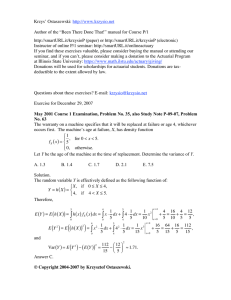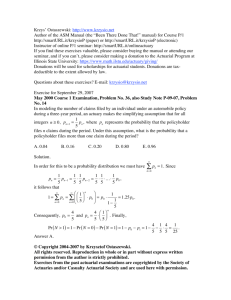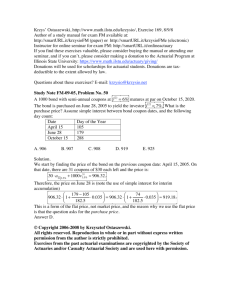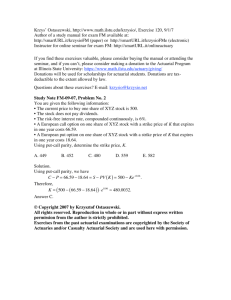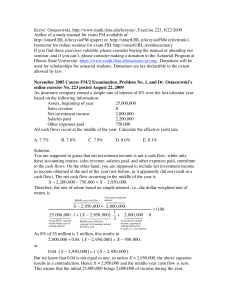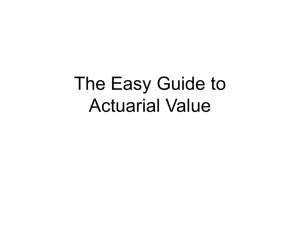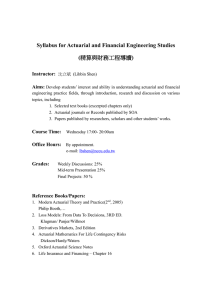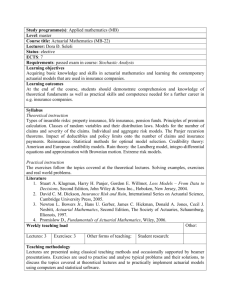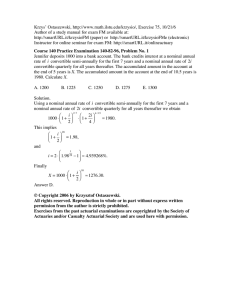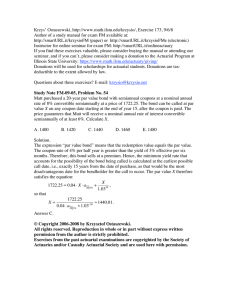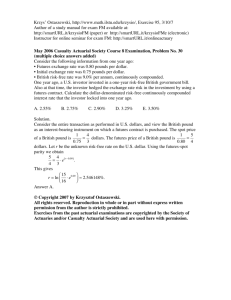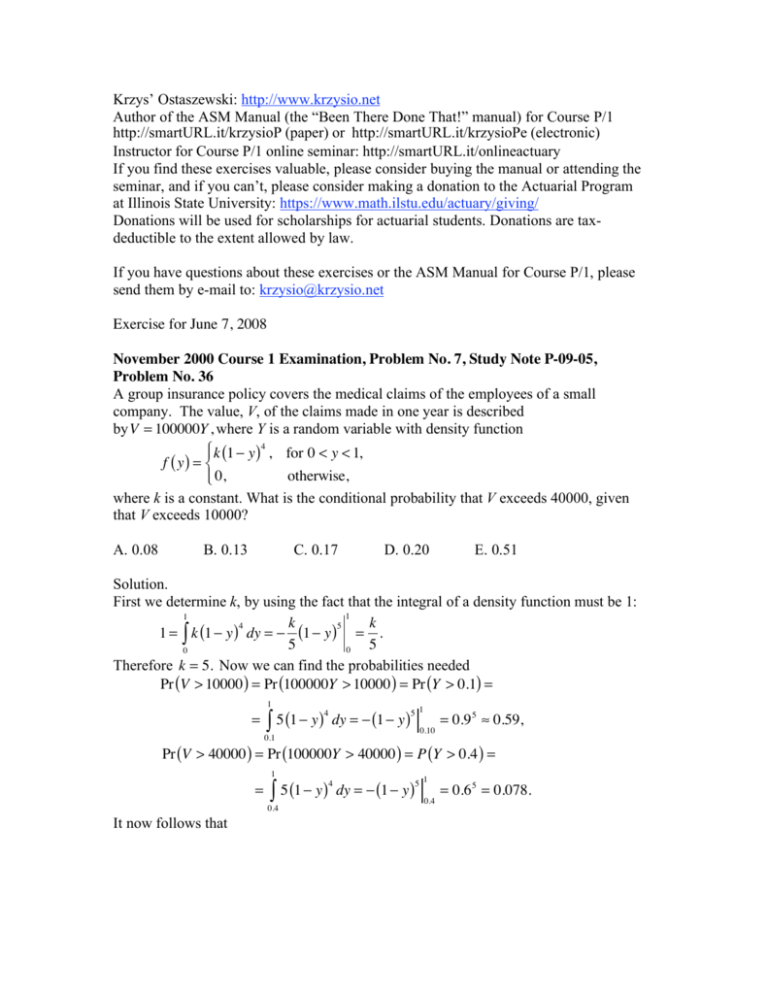
Krzys’ Ostaszewski: http://www.krzysio.net
Author of the ASM Manual (the “Been There Done That!” manual) for Course P/1
http://smartURL.it/krzysioP (paper) or http://smartURL.it/krzysioPe (electronic)
Instructor for Course P/1 online seminar: http://smartURL.it/onlineactuary
If you find these exercises valuable, please consider buying the manual or attending the
seminar, and if you can’t, please consider making a donation to the Actuarial Program
at Illinois State University: https://www.math.ilstu.edu/actuary/giving/
Donations will be used for scholarships for actuarial students. Donations are taxdeductible to the extent allowed by law.
If you have questions about these exercises or the ASM Manual for Course P/1, please
send them by e-mail to: krzysio@krzysio.net
Exercise for June 7, 2008
November 2000 Course 1 Examination, Problem No. 7, Study Note P-09-05,
Problem No. 36
A group insurance policy covers the medical claims of the employees of a small
company. The value, V, of the claims made in one year is described
by V = 100000Y , where Y is a random variable with density function
"$ k (1 ! y )4 , for 0 < y < 1,
f ( y) = #
otherwise,
%$ 0,
where k is a constant. What is the conditional probability that V exceeds 40000, given
that V exceeds 10000?
A. 0.08
B. 0.13
C. 0.17
D. 0.20
E. 0.51
Solution.
First we determine k, by using the fact that the integral of a density function must be 1:
1
1
k
k
4
5
1 = ! k (1 " y ) dy = " (1 " y ) = .
5
5
0
0
Therefore k = 5. Now we can find the probabilities needed
Pr (V > 10000 ) = Pr (100000Y > 10000 ) = Pr (Y > 0.1) =
1
=
! 5 (1 " y )
4
dy = " (1 " y )
5 1
0.1
0.10
= 0.9 5 # 0.59,
Pr (V > 40000 ) = Pr (100000Y > 40000 ) = P (Y > 0.4 ) =
1
=
! 5 (1 " y ) dy = " (1 " y )
4
0.4
It now follows that
5 1
0.4
= 0.6 5 = 0.078.
Pr (V > 40000 V > 10000 ) =
=
Pr ({V > 40000} ! {V > 10000})
Pr (V > 10, 000 )
=
Pr (V > 40, 000 ) 0.078
=
= 0.132.
Pr (V > 10, 000 ) 0.590
Answer B.
© Copyright 2004-2008 by Krzysztof Ostaszewski.
All rights reserved. Reproduction in whole or in part without express written
permission from the author is strictly prohibited.
Exercises from the past actuarial examinations are copyrighted by the Society of
Actuaries and/or Casualty Actuarial Society and are used here with permission.

